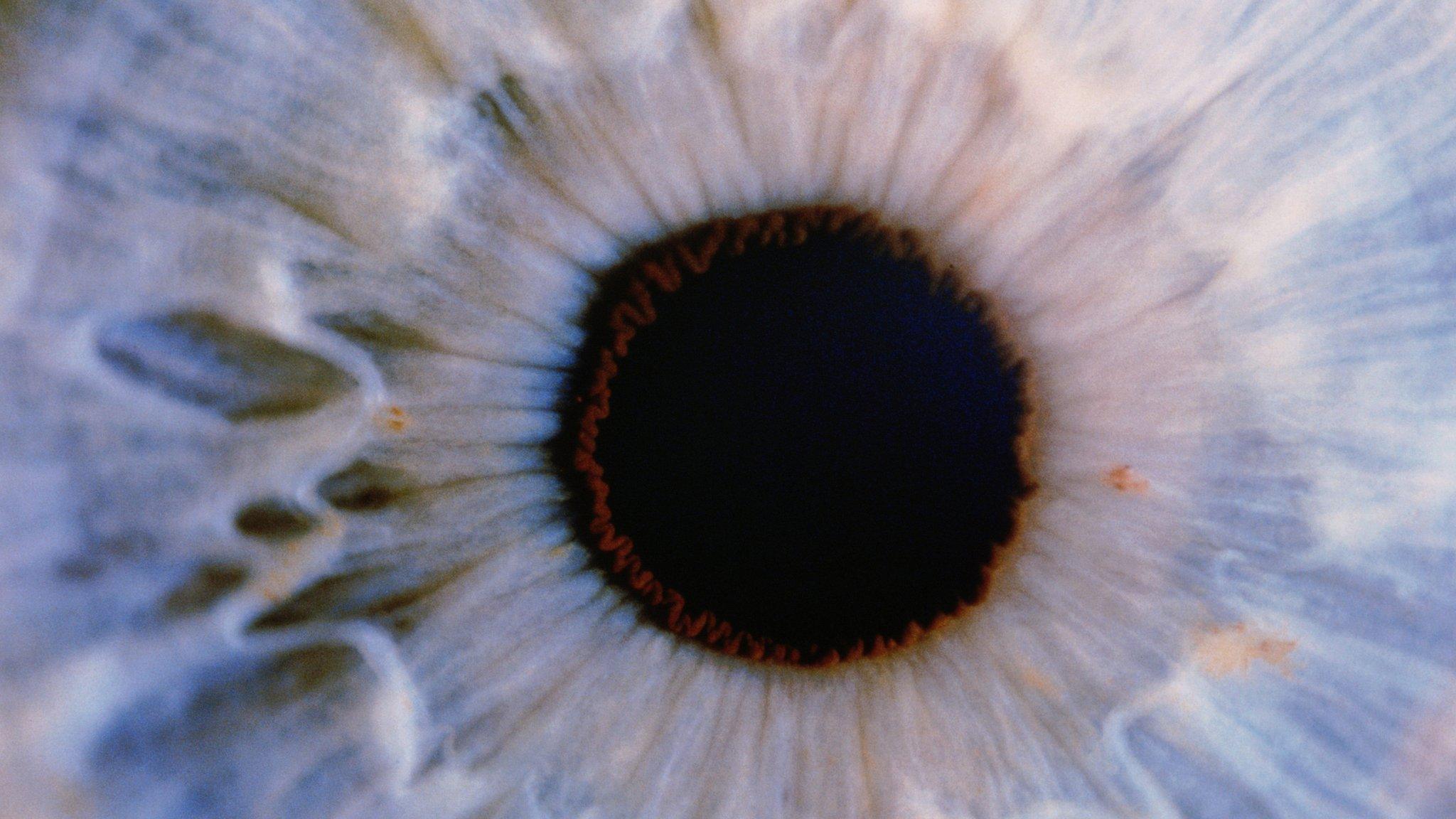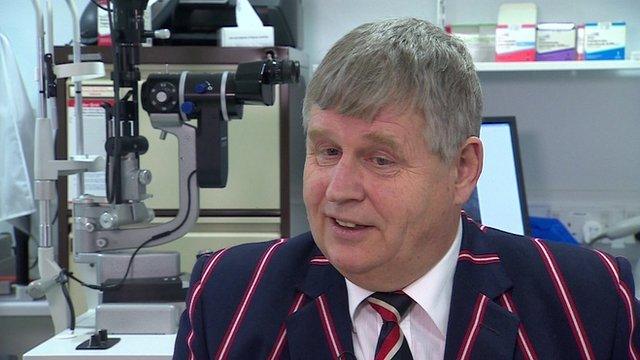'Smart glasses' help fix failing vision
- Published
Testing out the smart glasses with Lyn Oliver
Researchers from Oxford University say they've made a breakthrough in developing smart glasses for people with severe sight loss.
The glasses enhance images of nearby people and objects on to the lenses, providing a much clearer sense of surroundings.
They have allowed some people to see their guide dogs for the first time.
The Royal National Institute of Blind People says they could be "incredibly important".
Lyn Oliver has a progressive eye disease which means she has very limited vision. Now 70, she was diagnosed with retinitis pigmentosa in her early twenties. She can spot movement but describes her sight as "smudged and splattered".
Her guide dog Jess helps her find her way around - avoiding most obstacles and hazards - but can't convey other information about her surroundings.
Lyn is one of nearly two million people in the UK with a sight problem which seriously affects their daily lives.
Most though have at least some residual sight.
Researchers at Oxford University have developed a way to enhance this - using smart glasses. They are fitted with a specially adapted 3D camera.

Dark spots across the retina (back of the eye) correspond with the extent of vision loss in retinitis pigmentosa
The images are processed by computer and projected in real-time on to the lenses - so people and objects nearby become bright and clearly defined.
'More independent'
Lyn Oliver has tried some of the early prototypes, but the latest model marks a key stage in the project, offering greater clarity and detail than ever before.
Dr Stephen Hicks, from the University of Oxford, who has led the project, says they are now ready to be taken from the research setting to be used in the home.
"If you're walking around you're able to navigate doorways, and see hazards on the floor that might trip you up. So you can become more independent and walk around with greater ease."
He says there has been a great response from people who have worn them.
"People have loved them. They remark how much they can see now. They can see details in faces, they can see their own hands. People have commented how they've seen their guide dog for the first time. It's a real enabler."
We took Lyn Oliver to try the latest glasses in Oxford's covered market, a busy enclosed space with lots of potential obstacles.
Soon she found her surroundings coming into focus. Her first response was to turn to our cameraman and exclaim: "You've been spotted!"
'I'm looking!'
Later, after navigating the passageways, corners and shopfronts she expressed her delight.
"I can see you! So I'm just standing here talking and not thinking. I'm looking!"
She said the glasses could help in many different settings.
"This way I could find my way to a door, around tables and out. Find the stairs and up the stairs."
She was taken aback when the glasses came off.
"Oh you've gone! You're not there any more. You've disappeared!"
The headset is still substantial, and connected by cable to a laptop in a backpack. But the researchers are confident in time they can be made the size of normal glasses.
Eventually, they say, they could be available for the cost of a mobile phone, saving the NHS millions of pounds by preventing falls.
They will start making an initial batch of 100 sets later this year, which will be offered to blind and partially sighted people to use in their daily lives. If that goes well they will start to produce larger numbers over the next couple of years.
The Royal National Institute of Blind People has followed the project closely. John Worsfold from the RNIB says they could make a massive difference to people's lives.
"I think these could be incredibly important. From what we've seen so far they could offer some great independence for blind and partially sighted people to get out and about and carry on normal lives."
- Published1 February 2014

- Published16 January 2014
